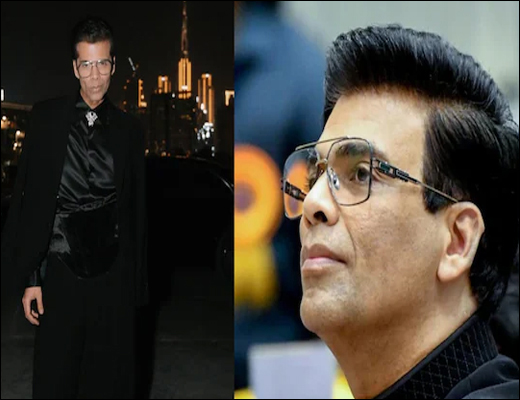All About Body Dysmorphic Disorder and its Ayurvedic Treatment; Karan Johar also Struggled with it
Abstract
Body Dysmorphic Disorder (BDD), commonly known as Body Dysmorphia, is a mental health condition characterized by obsessive concerns about perceived flaws in physical appearance. This condition affects millions worldwide, impacting self-esteem and mental well-being. Recognizing the interplay between mind, body, and spirit, Ayurveda offers valuable insights into achieving harmony through dietary regulation, herbal therapies, and meditative practices. This article explores the prevalence, causes, symptoms, and treatment options for BDD while shedding light on filmmaker Karan Johar’s struggle with the disorder.
Karan Johar’s Journey with Body Dysmorphia
Karan Johar, a celebrated Indian filmmaker, has been vocal about his struggle with Body Dysmorphic Disorder (BDD), shedding light on the deep-rooted insecurities he has faced throughout his life. From a young age, he battled feelings of inadequacy related to his appearance and mannerisms, often feeling out of place due to societal and familial expectations. His discomfort with his body has manifested in various ways, such as always opting for oversized clothing to conceal his shape, and feeling anxious in social situations. To manage his condition, Karan Johar has sought professional help, attending therapy sessions and taking prescribed medication after experiencing a panic attack. By sharing his journey, he raises awareness about mental health, self-acceptance, and industry pressures. His openness serves as a reminder that even successful individuals grapple with deep-seated insecurities and that seeking help is a vital step toward healing.
Introduction to Body Dysmorphic Disorder (BDD)
Body Dysmorphia is a mental health condition where a person becomes overly focused on flaws in their appearance, flaws that may be minor or even nonexistent. This constant worry can take a serious toll, leading to anxiety, low self-esteem, and avoiding social situations. Since BDD is linked to obsessive-compulsive tendencies, it can deeply affect daily life, making even simple interactions feel overwhelming.
Causes and Risk Factors of Body Dysmorphia
The exact causes of BDD are not entirely understood, but several factors contribute to its development, they are as follows:
- A family history of OCD or anxiety increases the risk.
- Serotonin imbalance may contribute to obsessive thoughts.
- Unrealistic beauty standards fuel insecurities.
- Appearance-related bullying can trigger BDD.
- Low self-esteem makes individuals more vulnerable.
- Perfectionism leads to constant self-criticism.
- Past emotional or physical trauma plays a role.
- Social media comparisons worsen body dissatisfaction.
- Existing anxiety disorders increase susceptibility.
- Avoidance behaviors reinforce a negative self-image.
Signs and Symptoms of Body Dysmorphia
Individuals with body dysmorphia exhibit the following signs:
- Obsessing over perceived flaws.
- Constant mirror checking or avoidance.
- Seeking reassurance from others.
- Excessive grooming or cosmetic fixes.
- Avoiding social interactions.
- Comparing looks to others.
- Struggling with low self-esteem.
- Anxiety and depression.
- Trouble focusing due to body image concerns.
- Suicidal thoughts in severe cases.
The Impact of Body Dysmorphia on Mental Health and Self-Perception
Body dysmorphia severely affects an individual’s mental well-being by distorting self-image and reinforcing negative thought patterns. People with BDD often suffer from anxiety, depression, and low self-worth, leading to social isolation and difficulty maintaining relationships. The disorder can also hinder professional growth and everyday functioning.
Diagnosis of Body Dysmorphia
Diagnosing body dysmorphia typically involves the following steps:
- Clinical Assessment
- Evaluation of symptoms
- DSM-5 Diagnostic Criteria
- Preoccupation with perceived flaws
- Repetitive behaviors
- Significant distress
- Not explained by another disorder (e.g., eating disorder, OCD)
- Psychological Questionnaires
- BDD Questionnaire (BDDQ)
- Yale-Brown OCD Scale Modified for BDD (BDD-YBOCS)
Differential Diagnosis
- OCD (BDD is appearance-focused, not general obsessions).
- Eating Disorders (BDD concerns extend beyond weight/shape).
- Social Anxiety (BDD is about self-image, not fear of judgment).
Management of Body Dysmorphia
Management approaches for body dysmorphia include:
- Psychological Therapies
- Cognitive-behavioral therapy (CBT)
- Exposure and response prevention (ERP)
- Mindfulness & acceptance therapy
- Medications
- Selective Serotonin Reuptake Inhibitors (SSRIs)
- Anti-Anxiety Medications
- Lifestyle Changes
- Regular Exercise
- Healthy Diet
- Proper Sleep Routine
Ayurvedic Aspect
In Ayurveda, Body Dysmorphic Disorder (BDD) is linked to an imbalance in the mind due to Chintyam (thinking) and Atichintana (excessive thinking/worrying). While natural thinking is essential for awareness and decision-making, overthinking disturbs mental peace. Ayurveda beautifully illustrates this with the saying, “Chinta (worry) and Chita (funeral pyre) differ by just a dot, Chita burns the dead, while Chinta burns the living.” This highlights how obsessive thoughts can negatively impact mental well-being.
मनसस्तु चिन्त्यमर्थः| तत्र मनसो मनोबुद्धेश्च त एव समानातिहीनमिथ्यायोगाः प्रकृतिविकृतिहेतवो भवन्ति||१६||
Ancient Reference – Charak samhita. Sutrasthana. 8/16
The natural function of the mind isChintyam (thinking), but when the mind and intellect (Buddhi) are used Ati (excessively), Heena (insufficiently), or Mithya (incorrectly), it can lead to both Prakriti (balanced health) and Vikriti (disease).
Etiopathogenesis
BDD can arise from Sahaja Hetu (genetic factors), Agantuja Hetu (external influences like trauma or brain abnormalities), or Vyadhi Hetu (underlying medical conditions). These factors disturb the normal functioning of Manas (mind), Buddhi (intellect), and Smriti (memory), leading to Viparyaya (false perception) and emotional instability.
Samprapti (Pathogenesis in Ayurveda)
Atiyoga (overuse) of Manasik Gunas (mental faculties) leads to Atichintana (excessive thinking) and self-obsession. This results in Vataprakopa (aggravation of Vata dosha), which disturbs the balance of Manasa Doshas (psychic energies), Rajas (overactivity), and Tamas (darkness/inertia). This causes instability in thought processes and emotional regulation. As a consequence, Manovaha Srotas Vaigunya (disruptions in mental channels) occurs, affecting Atmavikruti (distorted self-perception) and increasing Chinta (worry) and Darpabhanga (low self-esteem). The Hrudaya (heart, the seat of consciousness), being the center of emotions and cognition, gets affected, leading to Viparyaya (false perception), obsessive thoughts, and self-criticism. With continuous imbalance, the Manovaha Srotas Dushti (impairment of mental pathways) gives rise to Manovikaras (mental disorders), including a repetitive cycle of Atichintana (excessive worry), Swapnavikruti (disturbed imagination), and Darpabhanga (loss of self-confidence), all of which are central to Body Dysmorphic Disorder (BDD).
Ayurvedic Management
त्रिविधमौषधमिति- दैवव्यपाश्रयं, युक्तिव्यपाश्रयं, सत्त्वावजयश्च|
तत्र दैवव्यपाश्रयं- मन्त्रौषधिमणिमङ्गलबल्युपहारहोमनियमप्रायश्चित्तोपवासस्वस्त्ययनप्रणिपातगमनादि,युक्तिव्यपाश्रयं- पुनराहारौषधद्रव्याणां योजना, सत्त्वावजयः- पुनरहितेभ्योऽर्थेभ्यो मनोनिग्रहः||
Ancient Reference – (Charak samhita. Sutrasthana. 11/54)
In Ayurveda, the treatment of Manas Roga (mental disorders), including Body Dysmorphic Disorder (BDD), follows a threefold approach: Satvavajaya Chikitsa (mind control), Daiva Vyapashraya Chikitsa (spiritual therapy), and Yuktivyapashraya Chikitsa (rational therapy).
- Satvavajaya Chikitsa (Psychotherapy & Mind Control): Helps reduce Atichintana (excessive worrying) and Viparyaya (false perception) in BDD
- Manonigraha (mind discipline)
- Counseling
- Meditation
- Emotional resilience to manage stress
- Daiva Vyapashraya Chikitsa (Spiritual Therapy): Helps eliminate negativity and bring Chitta Prasadanam (mental peace)
- Mantra (sacred chants) for mental purification
- Yajna (fire rituals) to promote positivity
- Daan (charity) to cultivate selflessness and inner peace
- Prarthana (prayers) for spiritual strength
- Upavasa (fasting) to detoxify the mind and body
- Yuktivyapashraya Chikitsa (Rational Therapy)
- Ahara (diet) for mental and physical nourishment
- Vihara (lifestyle) to maintain emotional balance
- Aushadha (medications) to regulate Manasa Doshas (Rajas and Tamas)
Herbal Remedies for Body Dysmorphia Disorder by Planet Ayurveda
Planet Ayurveda is a recognized Ayurvedic brand dedicated to providing pure, natural, and effective herbal formulations based on ancient Ayurvedic wisdom. With a strong emphasis on holistic healing, the company ensures its products are 100% vegetarian, and free from chemicals, preservatives, and artificial additives. For managing Body Dysmorphic Disorder (BDD) and mental well-being, Planet Ayurveda offers Brahmi Capsules, Ashwagandha Capsules, and Calm Easy Capsules, which help support cognitive function, reduce stress, and promote relaxation.
Products List
- Brahmi Capsules
- Ashwagandha Capsules
- Calm Easy Capsules
Products Description
1. Brahmi Capsules
These capsules are formulated using a standardized extract of Brahmi (Bacopa monnieri), a renowned Ayurvedic herb known for its medhya (intellect-enhancing) and nervine tonic properties. It helps balance the Manasa Doshas (Rajas and Tamas). Regular use of Brahmi Capsules supports emotional stability, calms the nervous system, and aids in Manonigraha (mind control), making it beneficial for individuals experiencing body dysmorphia.
Dosage: 1-2 capsules, twice a day with water, after meals.
2. Ashwagandha Capsules
These capsules are made with a standardized extract of Ashwagandha (Withania somnifera), a powerful adaptogenic herb in Ayurveda. It is known for its ability to strengthen the nervous system, reduce stress, and promote emotional resilience. It supports Dhee (intellect), Dhriti (willpower), and Smriti (memory), promoting emotional stability and mental well-being.
Dosage: 1-2 capsules, twice a day with water, after meals.
3. Calm Easy Capsules
These capsules are made with herbs such as Tagar (Valeriana wallichii), Brahmi (Bacopa monnieri), and Ashwagandha (Withania somnifera), designed to promote mental relaxation and emotional stability. Regular use supports a balanced mind, improves focus, and alleviates obsessive thoughts.
Dosage: 1-2 capsules, twice a day with water.
Conclusion
Body Dysmorphic Disorder is a serious mental health condition that can significantly impact an individual’s quality of life. Karan Johar’s openness about his struggles brings awareness to the disorder, encouraging others to seek help. By addressing the root causes of mental distress through diet, herbal remedies, and mindfulness practices, Ayurveda promotes overall well-being.





